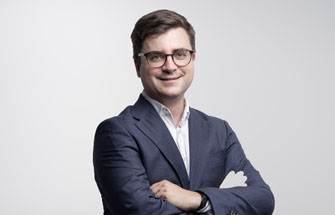Brought up on science fiction, we have often pitted man against machine, but in the world of finance, it is by working together that they produce the best outcomes.
Following his defeat by Deep Blue in 1997, chess champion Garry Kasparov launched a new concept, Advanced Chess, where man and machine would no longer compete but instead work together to create a human-computer player. Applied to finance, this idea is being brought to life in the form of quantitative tools designed as sparring partners for wealth managers to get the most out of human intuition and artificial intelligence.
First, technology is the natural choice for processing information. Data, which is ever more voluminous and increasingly available instantaneously, can now be processed, allowing complex decisions to be taken in real time. The cloud, miniaturisation and soon, perhaps, quantum processors, are enabling constant growth in storage and calculation capacity. We can use this capacity to store and analyse market data, financial data, press reports and now – thanks to social media – investor psychology in real time.
However, this requires mastery of increasingly advanced technology – distributed processing using grid computing, machine learning algorithms and semantic analysis using natural language processing tools. These tools have traditionally been the prerogative of tech firms, because they demand specialist expertise that is not necessarily available in financial institutions. Some companies have nonetheless managed to integrate this expertise internally or within a dedicated subsidiary, organised like a Silicon Valley firm with teams of engineers – quants, data scientists and developers – equipped with the latest infrastructure and working in partnership with the business using agile principles. At SILEX, for example, 20% of staff are part of the Technology division.
Data analysis supports investment and asset allocation at various stages.
- Measuring risk is not intuitive, because financial returns do not follow the normal laws of distribution. The correlations between assets change depending on market regimes. Committing to respecting a risk mandate requires specific tools.
- Quickly explaining performance requires calculations of contributions and advanced attributions to interpret results and figures.
- Selecting investment vehicles demands the manipulation of large volumes of data. There are currently 50,887 funds domiciled in Europe, and constructing databases would appear to be crucial when it comes to analysing them.
- Sharing information with our partners, which they share with their clients. Technology serves the reporting process and on-demand availability tools.
- Providing alerts about past and future events for a portfolio: these are the lifecycle tools of structured products.
So, technology is not an alternative to humans, and robo-advisors are likely to remain confined within the industry to highly standardised offerings. The role of humans, with their intuition and experience, is vital. Data, where it is analysed, increases the capacity to make the right decisions, like a co-pilot on an aeroplane.






